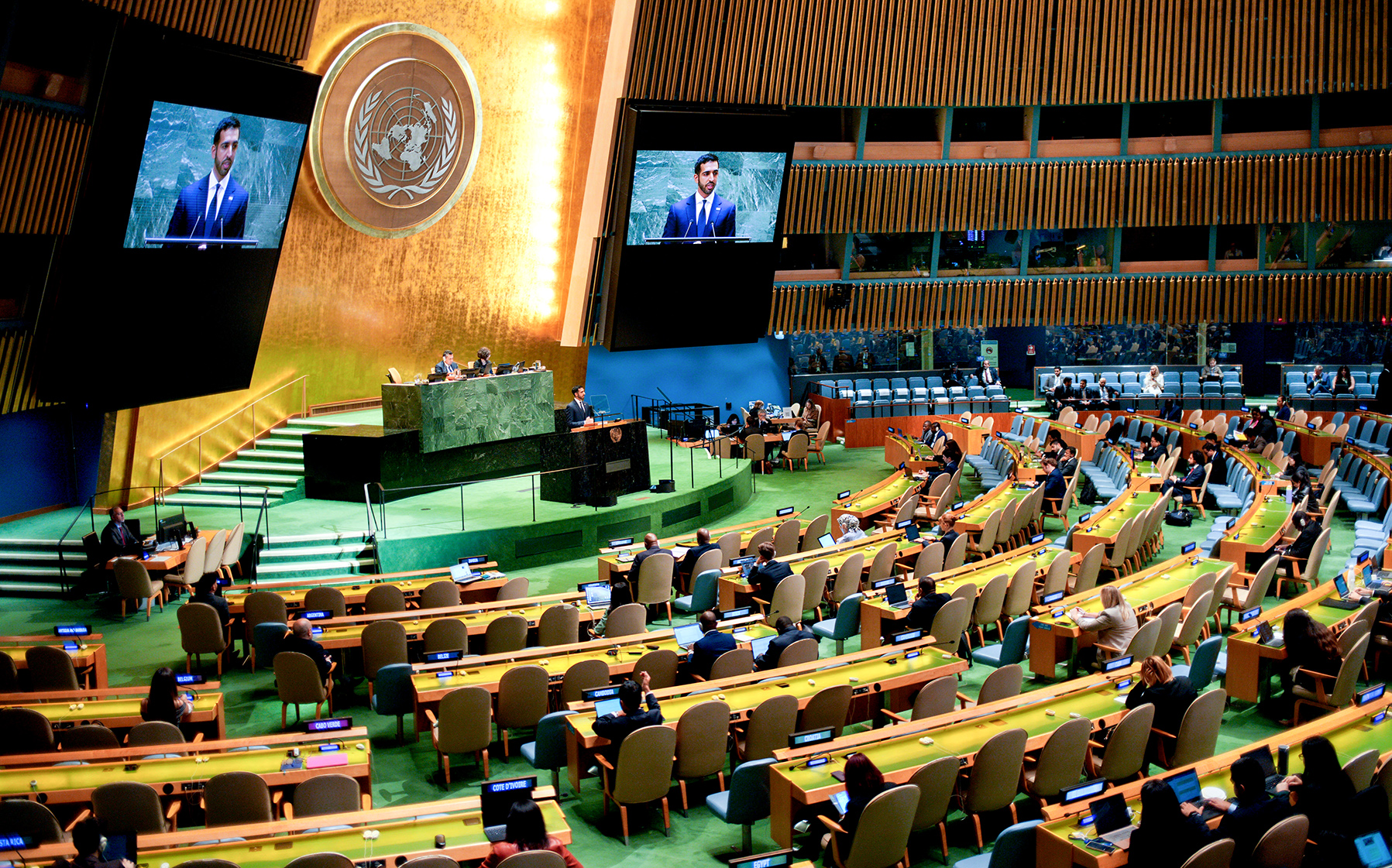World leaders gathered at the United Nations headquarters in New York from 22 to 23 September 2024 to adopt the Pact for the Future, which it did with an overwhelming majority. Despite a motion by Russia to derail the adoption of the pact, which was defeated by 143 to seven, with 15 abstentions, the overwhelming majority of nations stood firmly behind the text of the pact. It was adopted without the need for a vote.
The leaders agreed that the world is at a time of profound global transformation, and that it faces catastrophic and existential risks. The Summit of the Future provided a once-in-a-generation opportunity to reimagine the multilateral system and steer humanity on a new course to meet existing commitments to solve the world’s long-term challenges.
It is the choices we make today that will determine the direction humanity takes. The summit chose a brighter future for all of humanity.
One by one, these leaders committed their nations to international cooperation based on respect for international law, to the adaptation of the multilateral system to ensure that it is fit for purpose, and to sustainable development, peace and security, and human rights.
Indeed, the world that we, the peoples thereof, want has been clearly defined.
Yes, the pact is also a commitment to action. Yet, to be frank, it offers very little that is new. It regurgitates and restates what has already been agreed.
Sustainable development
On sustainable development, the thrust is the implementation of the 2030 Agenda for Sustainable Development, the Addis Ababa Action Agenda, and the Paris Agreement on Climate Change.
It again calls for the eradication of poverty, the ending of hunger and food insecurity, the closing of the finance gap in developing countries, and the protection of the multilateral trading system as the engine for sustainable development.
It expresses its concerns regarding inequality, the social cohesion deficit, and the need for effective, accountable and inclusive institutions that uphold human rights and fundamental freedoms. It again commits nations to gender equality and the empowerment of women and girls, the protection of the environment, and the promotion of culture and sport as integral to sustainable development.
International peace and security
With regard to international peace and security, the pact again commits to addressing the root causes of conflict, the protection of civilians in armed conflict, the lending of support to people who are affected by humanitarian emergencies, and the defusing of tensions and the dissolving of disputes between the member states of the United Nations.
These nations say they will fulfil their obligations and comply with the International Court of Justice. They say they will sustain peace and adapt peace operations to better respond to existing challenges and new realities.
Science, technology and innovation
According to the pact, science, technology and innovation as well as digital cooperation need to be applied and scaled up to benefit people, the planet and human rights, to foster gender equality, and to build and complement indigenous, traditional and local knowledge, and the means to do so in developing nations will be amplified.
Youth
Nations will invest in and strengthen the social and economic development of youth and foster their social inclusion, integration and meaningful participation at both national and international level.
Global governance transformation
The pact again points to the now long overdue need for global governance transformation: making the Security Council more representative, inclusive, democratic and accountable, among others; revitalising the General Assembly’s work; strengthening the Economic and Social Council to accelerate sustainable development; and strengthening the Peacekeeping Commission and United Nations system.
It also, once more, calls for the reform of the international financial architecture to address the challenges of today and tomorrow, to strengthen the voice and representation of developing nations, to promote sustainable lending, and to mobilise additional resources to finance the sustainable development goals.
All of this is to be welcomed and wholeheartedly supported, but does leave one with a distinct sense of déjà vu.
Of course, what one was hoping for was that the pact would not only spell out the actions to be taken, but that it would also have set out the action plan and roadmap to achieving the goals. There is no such plan incorporated into the pact.
No action plan and no roadmap
So, in essence, the pact is a repackaged set of goals and commitments to achieve the world we want, but with no action plan and no roadmap to get there. This gives rise to the valid question: Has the dial been moved?
One supposes that it is always good to stop and take stock of what has been achieved and what still needs to be done. So, in that sense, the Pact for the Future serves a purpose. Clearly, the ideals and commitments therein cannot be faulted. But equally valid is the dose of scepticism about its coming to fruition.
We’ve heard it all before, and we’ve been disappointed before. Moreover, let us not forget that many of the leaders who have praised the pact up to the hilt are today back home overseeing regimes that continue to kick human rights and democracy in the teeth, continuing to commit grievous war crimes, and actively scheming to undermine the multilateral financial architecture and trading system.
And these self-serving leaders, with so much blood on their hands, do so with impunity. The Permanent Five’s downright refusal to jettison the Security Council veto, too, leaves a bad taste in the mouth.
A better tomorrow requires firm, planned and sustained implementation – and consequences for those who undermine it. Without this, the pact will remain an unfulfilled ideal, waiting to be repackaged once more by the next generation. DM
This article captures Daryl Swanepoel’s impressions following his attendance of the UN General Assembly session called to adopt the Pact for the Future.





